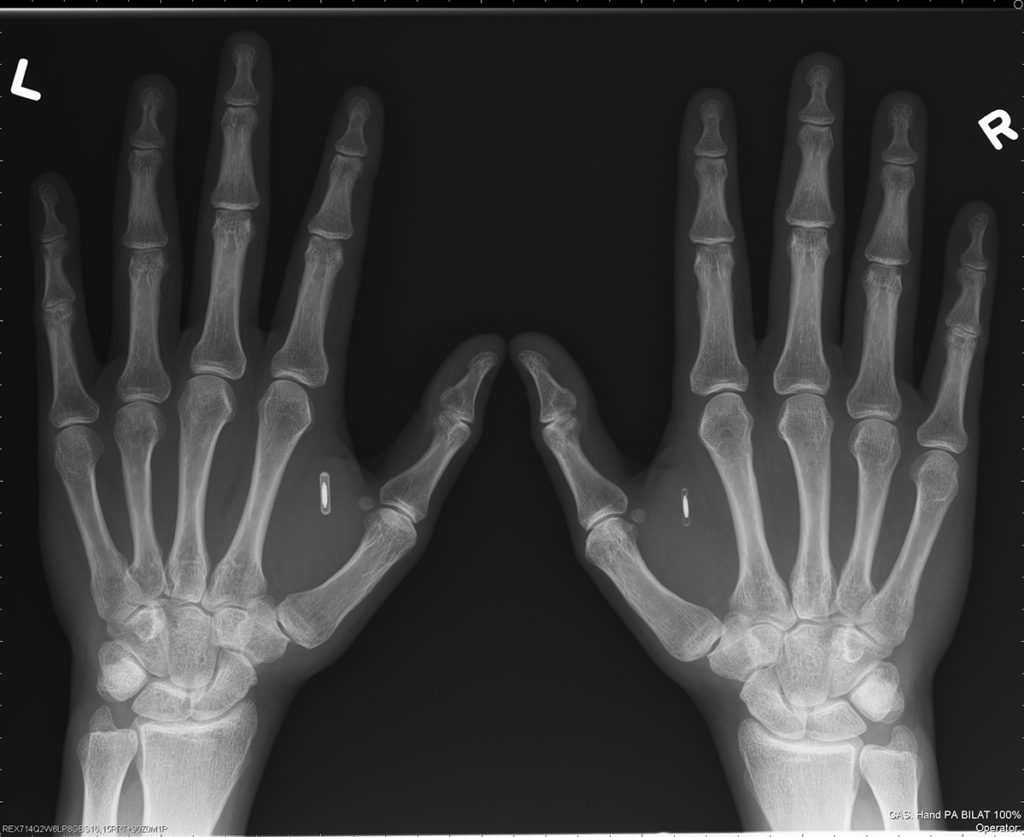Katelyn Mae Petrin on biohackers and the medical humanities

Senior Katelyn Mae Petrin in the Kenneth and Nancy Kranzberg Art & Architecture Library. Joe Angeles/WUSTL Photos
As a Merle Kling Fellow in Arts & Sciences you proposed a special major in the medical humanities. What drew you to that topic?
The medical humanities encourage a holistic, multi- and inter-disciplinary look at how work done by doctors and scientists affects people and ideas. They can help future doctors and policymakers to better understand their impact on patients — but there are also important academic questions that are only just starting to be asked. I wanted to learn about health, the body, science, knowledge production, biology, the way history influences the present and the way narratives influence the world around them.
Your research project is titled “Who’s Afraid of the Big Bad Future?” What’s it about, and what did you find interesting about the subject?
It’s about a group of people called “grinders” who implant themselves with semi-practical, semi-artistic biotech. They want to become cyborgs. Most grinders have magnets in their fingers.
I’m fascinated by a lot of things about the grinders, but mostly I’m intrigued by their optimism. This is a group that takes its name from an apocalyptic sci-fi comic and who are doing things that, in a thousand stories, herald doom and death. But they’re excited, they’re ecstatic and they’re almost unfailingly optimistic that the work they do will be fun and, just maybe, will contribute to humanity’s betterment.
I think there’s something admirable about their spirit.

This image, from Petrin’s research project, “Who’s Afraid of the Big Bad Future,” depicts an RFID chip embedded in the hands of Amal Graafstra, founder of the biohacker startup Dangerous Things. Such chips can be used like digital keys for electronic authentication. (Photo: Dangerous Things)
In addition to academic research, you’ve written for the Common Reader, the journal of ideas launched by WashU professor Gerald Early. What’s it like writing for that audience?
The Common Reader is interesting because it sits between my two interests — academic writing and journalism.
Academic writing accesses complicated ideas and theoretical frameworks, but can be reductive about what’s “really” going on with a text, phenomenon or group of people. Journalism presents voices without theoretical commentary — people can just speak for themselves, which is awesome when it comes to stories about communities that don’t often get a voice in society. But that can make it hard to connect what they’re saying to larger trends.
The Common Reader gives me some flexibility to walk the blurry in-between lines.
by Liam Otten